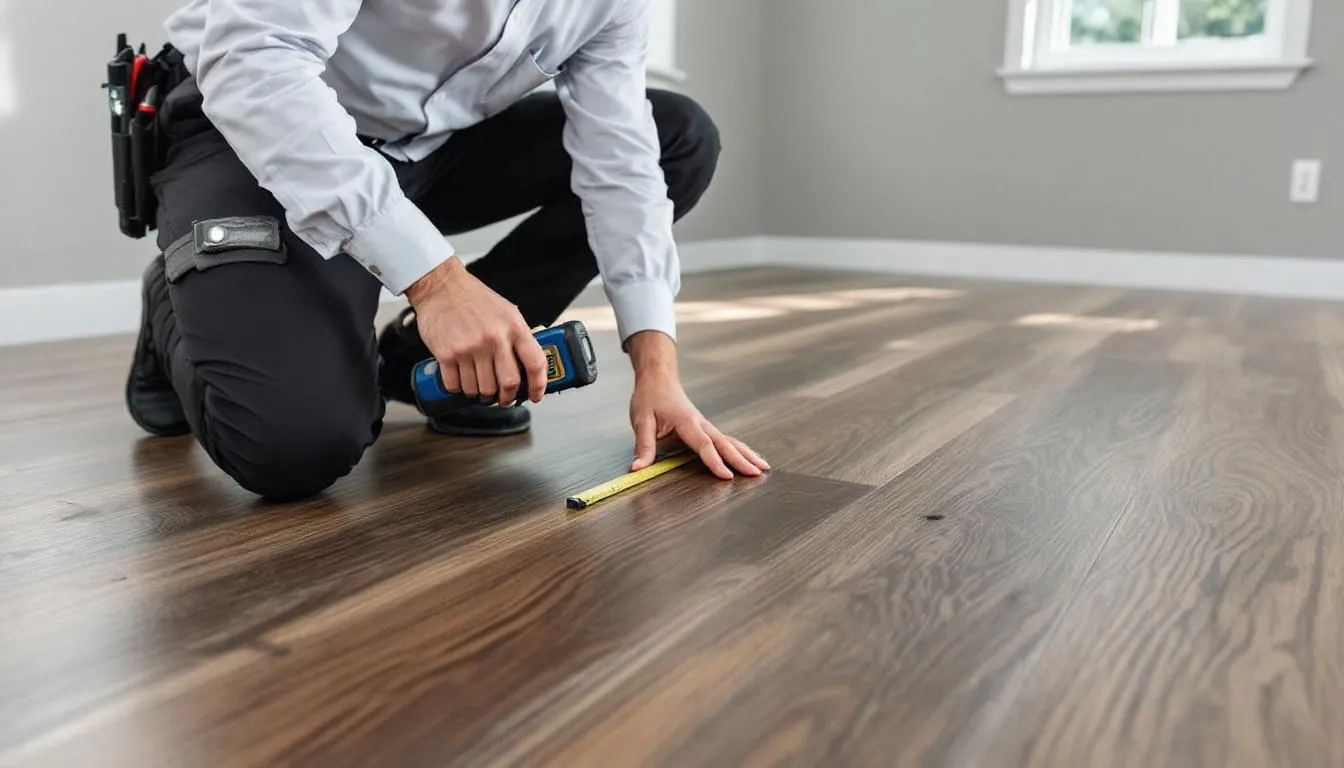Key Takeaways
- First, take a good look at your floors – sometimes a deep clean can bring back their shine without the need for a full refinish.
- Expect about 3-5 days of disruption, so plan ahead by moving furniture and protecting your belongings from dust.
- Choose between water-based and oil-based finishes by weighing factors like durability, appearance, and whether you want to avoid yellowing.
- If your space is over 500 square feet or you want a hassle-free job, hiring a professional for dustless sanding might be the way to go. In Vancouver, many homeowners trust Vancouver’s hardwood refinishing pros for expert results and efficient service.
Refinishing hardwood floors can truly transform the feel of your home and add value. But if you rush in without knowing what to consider when refinishing the hardwood floors, you might end up with costly mistakes or results that don’t quite meet your expectations. Whether your wood floors are scratched from heavy foot traffic or you simply want a fresh new look, understanding the key steps will help you get the best outcome.
Most people refinish their hardwood floors to bring back their original beauty and extend their lifespan. But this process involves several important decisions — from figuring out if refinishing is really necessary, to picking the right finish, and managing your project timeline. This friendly, step-by-step guide will walk you through everything you need to know to get professional-quality results without the stress.
Evaluating Your Floor’s Current Condition
Before diving into refinishing, it’s worth checking if your floors really need it. Sometimes a thorough deep cleaning with a gentle, pH-neutral cleaner or diluted vinegar can restore their shine and reduce the appearance of scratches.
Look closely for damage: light surface scratches might only need a light sanding and recoating, while deep scratches, water damage, or worn finishes usually call for a full sanding. Don’t forget to check the edges near baseboards — floors can generally be refinished about 4 to 6 times over their lifetime.
Also, knowing your wood type helps — red and white oak are common and take stain well, but exotic woods might need special care.
Budget and Cost Considerations
The cost to refinish hardwood floors varies depending on where you live, the condition of your floors, and how complex the job is. Hiring a professional for a 400-square-foot room can be pricey, while DIY can save money but comes with equipment rental and material costs. Keep in mind there might be extra expenses for moving furniture, removing trim, repairing boards, and opting for a water-based poly finish, which tends to cost more but won’t yellow over time.
If you’re new to this, DIY projects often take twice as long as professional jobs, so factor in that extra time.
Project Timeline and Preparation
Typically, refinishing takes about 3 to 5 days:
- Days 1-2: Sanding with progressively finer grits
- Day 3: Staining (if you choose to)
- Days 4-5: Applying polyurethane coats
Make sure to clear out all furniture, wall hangings, and belongings. Removing shoe molding and baseboards can help you get closer to the edges when sanding. Protect your vents and fixtures with plastic sheeting, and consider turning off your HVAC system during sanding to keep dust from circulating.
Because of fumes and drying times, it’s a good idea to stay somewhere else during staining and finishing.
If you live in a condo or multi-unit building, coordinating with condo general contractor services can help manage logistics and ensure compliance with building regulations.
Equipment and Tool Requirements
Refinishing hardwood floors requires some specialized equipment, which most homeowners rent. The key tools you’ll need include a drum sander for big open areas, an edge sander for along the walls, and hand-held sanders for corners and tight spots.
It’s smart to reserve your equipment online ahead of time and plan your rental period carefully to avoid extra fees. Here’s what you’ll want:
- Drum sander with dust collection
- Edge sander
- Palm sander
- Shop vacuum with a good filter
- Protective gear like dust masks and knee pads
Use sandpaper in this order: start with 36-40 grit for heavy sanding, then 60 grit to smooth things out, and finish with 100 grit for a fine surface. Always wear safety gear because sanding creates a lot of dust.
If you’re new to drum sanders, try a test run on a small patch first — they can be tricky to handle and can damage your floor if used improperly.
Sanding Process and Techniques
Begin with a test run using 100-grit sandpaper to get a feel for the sander. Then follow this grit sequence carefully:
- 36-40 grit to strip off the old finish
- 60 grit to smooth scratches
- 100 grit for the final prep
Always sand with the grain of the wood, overlapping each pass evenly to avoid uneven spots. Use edge and palm sanders for walls and corners. Vacuum thoroughly and inspect your work after each grit to make sure the surface is smooth.
Staining and Finish Selection
Pick your stain based on your wood type and the style you want. Oil-based stains give rich, warm colors but take longer to dry. Water-based stains dry faster and offer more consistent color. Keep in mind that dark stains can make dust more visible, while lighter stains are easier to keep looking clean.
Test your stain on a small sample before applying it to the whole floor. Apply stain when humidity is moderate for even absorption, and allow 8-12 hours for it to dry before adding your finish.
Polyurethane Finish Options
Choosing between water-based and oil-based polyurethane affects how your floors look and how you care for them:
Water-Based Polyurethane:
- Dries quickly — 2-4 hours between coats
- Low odor and fewer harmful fumes
- Keeps wood’s natural color without yellowing
- Slightly less durable but easier to touch up
- Costs more upfront
Oil-Based Polyurethane:
- Takes longer to dry — 8-24 hours between coats
- Strong smell requiring good ventilation
- Adds warm amber tones that yellow over time
- More durable for heavy traffic areas
- Less expensive but lengthens the project
Choose satin finish if you want less slipperiness, or glossy if you prefer a shiny look (though scratches show more). Apply 2-3 coats, lightly buffing between each. Water-based finishes need about 18 hours before you can walk on them and 72 hours to fully cure; oil-based finishes take longer.
Dust Management and Air Quality
Even with dustless sanding, some dust is inevitable. Edge sanding tends to create more dust because it’s harder to capture.
Keep dust under control by sealing doors, turning off HVAC systems, covering vents, using air purifiers, and planning a thorough clean-up afterward.
Make sure your space is well-ventilated when applying finishes, especially oil-based ones with stronger fumes.
When to Hire Professionals vs DIY
Consider hiring a pro if your space is over 500 square feet, has a complicated layout, exotic woods, major repairs, dust sensitivity, or a tight schedule. Professionals offer dustless sanding, consistent results, and often warranties.
DIY is a good fit for smaller rooms, people comfortable with tools, and those with flexible timelines. Just remember to factor in equipment rental, time, and learning curve.
Many Vancouver residents rely on Vancouver’s hardwood refinishing pros for expert craftsmanship, especially when seeking a hassle-free experience or working in condos where condo general contractor services can assist with coordination.
Seasonal Timing and Environmental Factors
Your home’s temperature and humidity can make a big difference. Keep indoor temps between 65-75°F during the project for the best drying and curing.
Avoid high humidity times to prevent finish problems. Summer is often ideal because families can stay elsewhere, and temperatures tend to be steady.
Also, consider natural light when picking stain colors — test samples at different times of day to see how they look.
Fill gaps in floorboards during humid months so the filler stays put when wood expands and contracts.
Plan your project to minimize disruption to your daily routine.
FAQ
How often can hardwood floors be refinished? Usually 4-6 times during their life, roughly every 7-10 years depending on wear.
Can I stay in my home during refinishing? It’s best to stay elsewhere during staining and finishing due to fumes and dust, usually for a couple of nights.
What’s the difference between screening and full refinishing? Screening lightly sands the finish for minor scratches; full refinishing sands down to bare wood for deeper damage.
Should I move furniture myself or hire movers? Most contractors don’t move furniture, so consider hiring movers or using dollies for heavy items.
How do I care for newly refinished floors? Use recommended cleaners, avoid water and steam, place mats at entrances, and maintain proper humidity. Your contractor should provide care instructions.



















